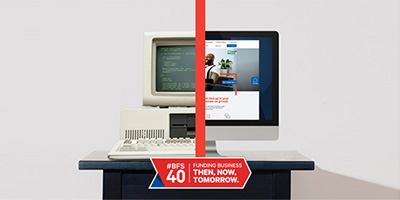SME finance options in 2023
The challenges facing SMEs today are well documented. Though the combination of inflation, the increasing cost of borrowing, supply chain disruption and fluctuating customer demand can seem overwhelming, there are ways for SMEs to optimise how they do business. One way is for businesses to find ways to leverage their access to different forms of finance.
But isn’t it becoming more difficult for SMEs to access finance?
It’s no secret that around the world, traditional sources of finance are beginning to dry-up in the face of economic challenges. Following government support introduced in many countries to help businesses overcome the Covid-19 pandemic, undoubtedly, the availability of finance has begun to slow.
But this isn’t for all types of financing. Invoice Finance, for example, which helps SMEs unlock cashflow tied-up in unpaid invoices is readily available in most markets around the world. Asset Finance, which supports the purchase of expensive machinery and equipment, is also accessible. This is because these forms of receivables finance enable businesses to access finance by leveraging assets, rather than just being based upon their trading history.
Why do SMEs need to access finance today?
There are a number of reasons SMEs may choose to look for external sources of finance. Here are some of the common motivations today.
1. Ongoing cashflow
SMEs are increasingly battling the issue of limited cashflow. Over a third (36%) of respondents in our recent survey told us there is insufficient cashflow within their businesses to provide headroom for investment – or even to operate efficiently. Accessing external finance can help to provide both a source of sustainable cashflow, and also an injection of working capital, helping businesses to take on new orders, hire staff and expand their operations.
2. Supply chain disruption
Around one in four SMEs report that between 1 and 10 of their clients have failed within the last six months. The reason? A combination of post-Brexit economics, geopolitical uncertainty in Ukraine, soaring energy prices and the detrimental impact of the pandemic are causing an unpreceded number of insolvencies, making the fight for survival for many SMEs very real indeed. Financing, combined with specialist support such as Bad Debt Protection, can help businesses to shield themselves from the impact of customer insolvency or protracted default.
3. Late payment
Late payments are a huge contributing factor that impact SMEs’ ability to survive, thrive and grow. According to the European Commission, thousands of small businesses fail each year while they are waiting for invoices to be paid. By leveraging third party funding sources such as Invoice Finance, SMEs can insulate themselves from the impact of late payment by accessing the finance they need upfront, avoiding the need to wait 30, 60 or 90 for customers to pay. Other ways SMEs can tackle this issue are by tightening their credit control processes, and undertaking debtor reviews to provide more flexibility to customers that regularly pay on-time, and to consider renegotiating payment terms for persistent late-payers.
What types of external finance are available for SMEs?
We know that finance can be complicated, that’s why simplicity is key when giving SMEs the support they need. There are a number of different options available for SMEs when looking to finance their business. Here are five common forms of finance for businesses.
1. Invoice Financing
There are two forms of Invoice Finance: Factoring and Invoice Discounting. Factoring provides upfront funding against unpaid invoices as well as support in collecting payment from customers. Invoice Discounting is similar, in that invoices are assigned to an Invoice Finance provider, however, in this instance the business continues to collect payment from customers. Both are fully flexible, and provide upfront cashflow, preventing SMEs from having to wait for customers to pay their invoices.
2. Asset Finance
Asset Finance is another umbrella term, this time for forms of finance such as Hire Purchase or Leasing. Both help SMEs to break-down the cost of expensive machinery and equipment purchases into more affordable payments. With Hire Purchase, items can be purchased by the customer at the end of the term. With Leasing, after the lease period is over, the item is returned to the vendor.
3. Bank loans
Loans enable SMEs to borrow sums of money at an agreed rate of interest for a predetermined period of time. While bank loans are often the first port of call for many businesses, they don’t always provide the flexibility many SMEs require. There are different types of loans, including secured and unsecured and the difference is whether the borrower is required to have collateral to ‘secure’ the loan, such as a house or vehicle.
4. Overdrafts
Overdrafts let you borrow money through your business bank account by taking out more money than you have in the account. While overdrafts can be a helpful short-term funding fix, due to higher interest rates, they are often not a long-term solution for SMEs. For larger overdrafts, some form of security may be required. Additionally, in times of high-interest rates, overdrafts can be much more expensive over longer periods of time.
5. Credit cards
Credit cards are one of the most common forms of short-term finance used by businesses. Often businesses can utilise credit cards for a short period of time without incurring interest, as long as the balance is paid-off within the interest-free period. While using credit cards can be useful in the short term, this form of financing provides lower sums of finance, and for shorter periods of time. Additionally, when interest is charged, it can often be at higher rates than other forms of finance.
What does the future of finance hold for struggling SMEs?
Small businesses have struggled to find adequate funding since the financial crisis. Banks have largely failed to respond to their needs. This has led to thousands of entrepreneurs having to go without financing options. The key is to find a source of finance that works for your business now and in the future, and this may mean using a combination of different funding types to support your business.
While there are a number of challenges for businesses today, the positive news is that there are a range of support options on offer from both the private and public sector to help your business.
At Bibby Financial Services, we’re committed to playing our part. Our working capital solutions help businesses to overcome challenges associated with late payment, unlock cashflow and protect revenue. Visit our Invoice Finance Products section to learn more.



